Samitha Somathilaka
Wet TinyML: Chemical Neural Network Using Gene Regulation and Cell Plasticity
Mar 13, 2024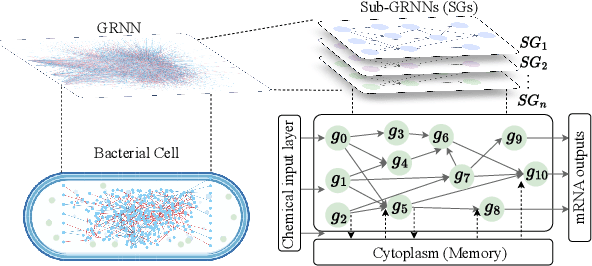
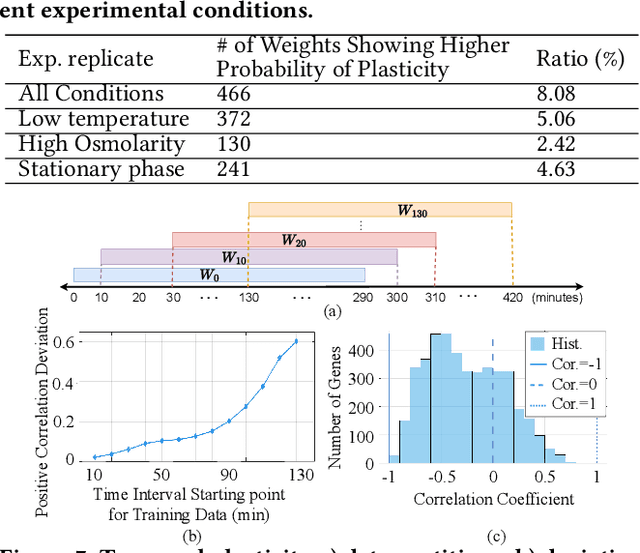
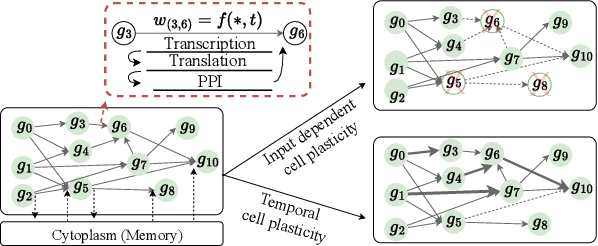
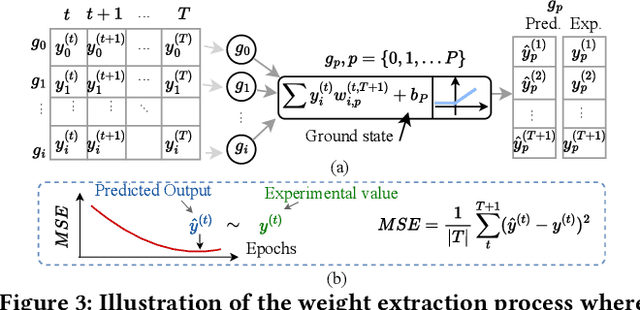
Abstract:In our earlier work, we introduced the concept of Gene Regulatory Neural Network (GRNN), which utilizes natural neural network-like structures inherent in biological cells to perform computing tasks using chemical inputs. We define this form of chemical-based neural network as Wet TinyML. The GRNN structures are based on the gene regulatory network and have weights associated with each link based on the estimated interactions between the genes. The GRNNs can be used for conventional computing by employing an application-based search process similar to the Network Architecture Search. This study advances this concept by incorporating cell plasticity, to further exploit natural cell's adaptability, in order to diversify the GRNN search that can match larger spectrum as well as dynamic computing tasks. As an example application, we show that through the directed cell plasticity, we can extract the mathematical regression evolution enabling it to match to dynamic system applications. We also conduct energy analysis by comparing the chemical energy of the GRNN to its silicon counterpart, where this analysis includes both artificial neural network algorithms executed on von Neumann architecture as well as neuromorphic processors. The concept of Wet TinyML can pave the way for the new emergence of chemical-based, energy-efficient and miniature Biological AI.
Inferring Gene Regulatory Neural Networks for Bacterial Decision Making in Biofilms
Jan 10, 2023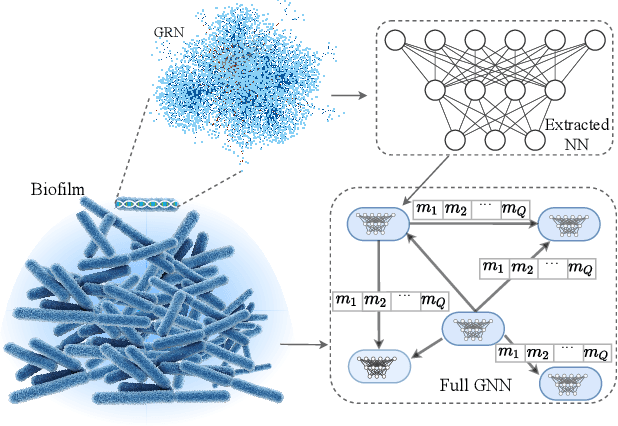
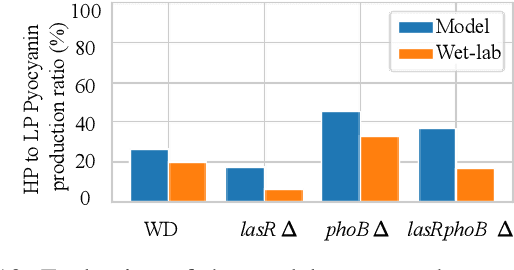

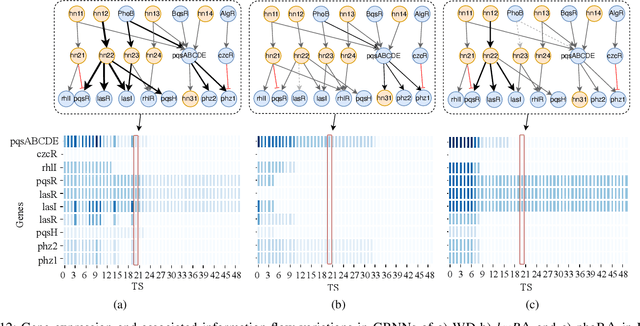
Abstract:Bacterial cells are sensitive to a range of external signals used to learn the environment. These incoming external signals are then processed using a Gene Regulatory Network (GRN), exhibiting similarities to modern computing algorithms. An in-depth analysis of gene expression dynamics suggests an inherited Gene Regulatory Neural Network (GRNN) behavior within the GRN that enables the cellular decision-making based on received signals from the environment and neighbor cells. In this study, we extract a sub-network of \textit{Pseudomonas aeruginosa} GRN that is associated with one virulence factor: pyocyanin production as a use case to investigate the GRNN behaviors. Further, using Graph Neural Network (GNN) architecture, we model a single species biofilm to reveal the role of GRNN dynamics on ecosystem-wide decision-making. Varying environmental conditions, we prove that the extracted GRNN computes input signals similar to natural decision-making process of the cell. Identifying of neural network behaviors in GRNs may lead to more accurate bacterial cell activity predictive models for many applications, including human health-related problems and agricultural applications. Further, this model can produce data on causal relationships throughout the network, enabling the possibility of designing tailor-made infection-controlling mechanisms. More interestingly, these GRNNs can perform computational tasks for bio-hybrid computing systems.
Realizing Molecular Machine Learning through Communications for Biological AI: Future Directions and Challenges
Dec 22, 2022
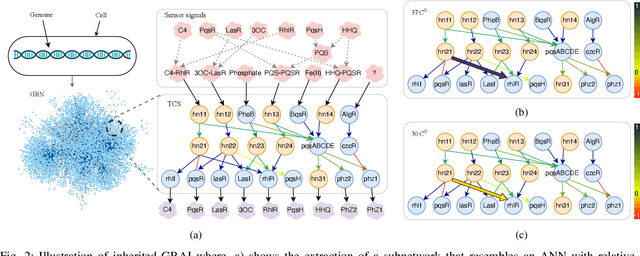
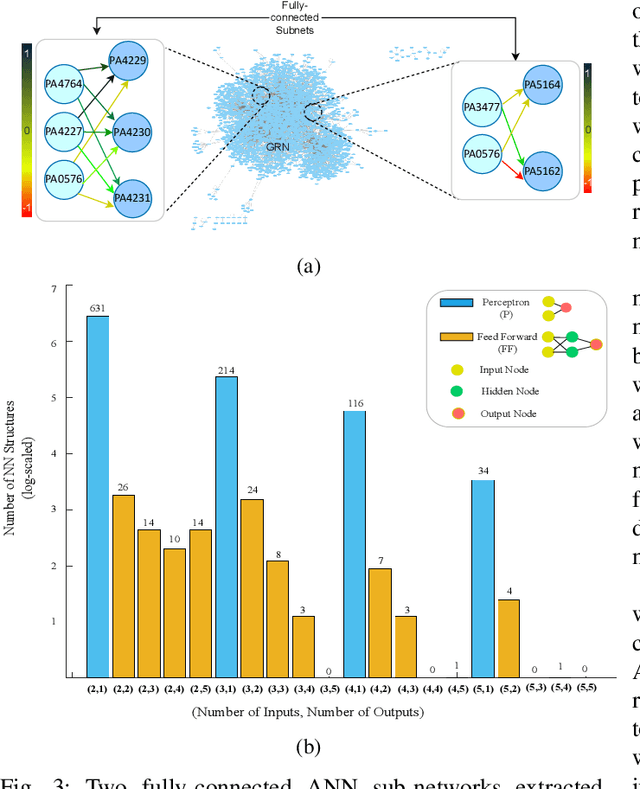
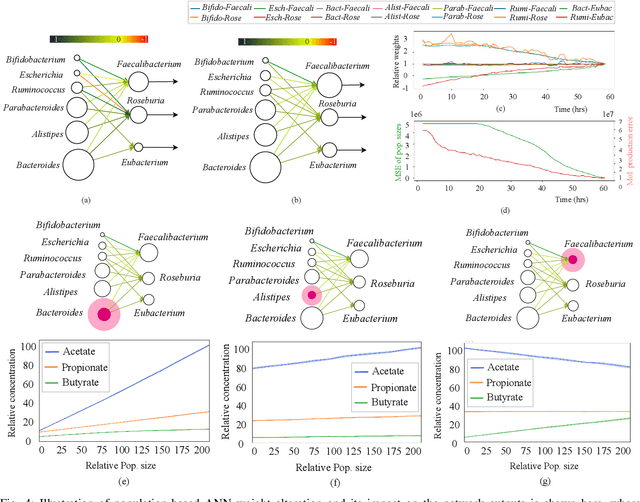
Abstract:Artificial Intelligence (AI) and Machine Learning (ML) are weaving their way into the fabric of society, where they are playing a crucial role in numerous facets of our lives. As we witness the increased deployment of AI and ML in various types of devices, we benefit from their use into energy-efficient algorithms for low powered devices. In this paper, we investigate a scale and medium that is far smaller than conventional devices as we move towards molecular systems that can be utilized to perform machine learning functions, i.e., Molecular Machine Learning (MML). Fundamental to the operation of MML is the transport, processing, and interpretation of information propagated by molecules through chemical reactions. We begin by reviewing the current approaches that have been developed for MML, before we move towards potential new directions that rely on gene regulatory networks inside biological organisms as well as their population interactions to create neural networks. We then investigate mechanisms for training machine learning structures in biological cells based on calcium signaling and demonstrate their application to build an Analog to Digital Converter (ADC). Lastly, we look at potential future directions as well as challenges that this area could solve.
 Add to Chrome
Add to Chrome Add to Firefox
Add to Firefox Add to Edge
Add to Edge